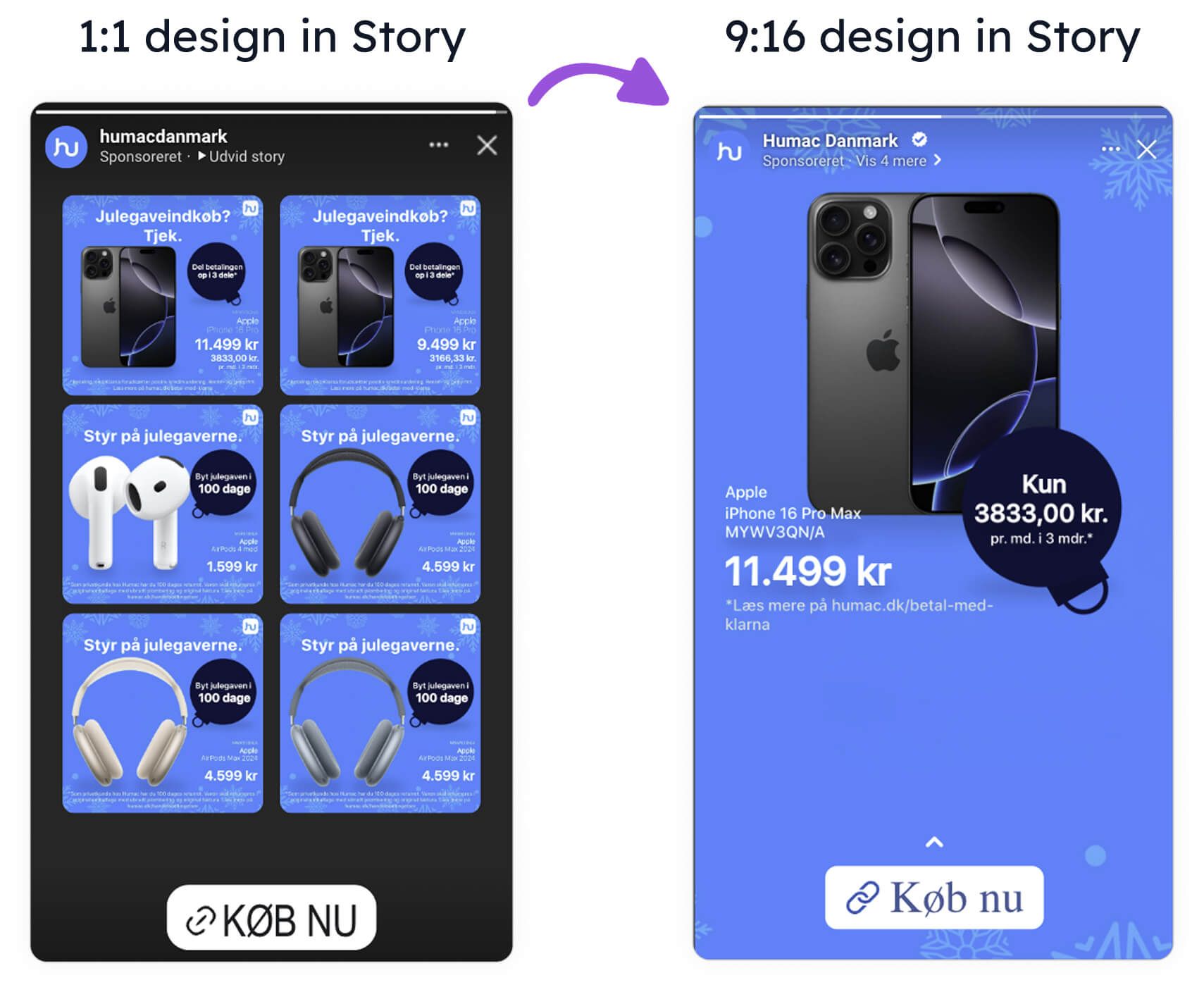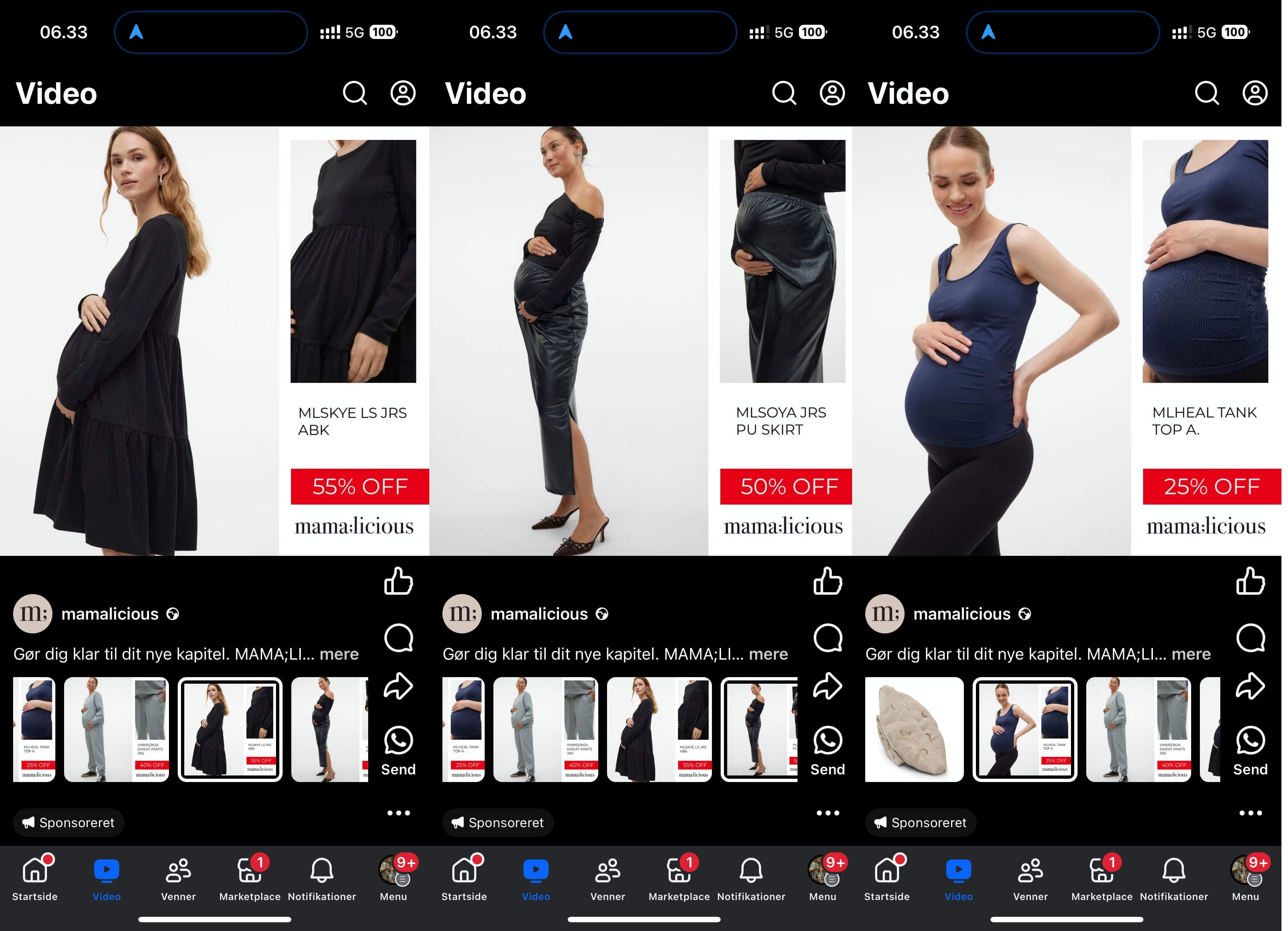Product-Level Video Ads
June 6, 2025
What Are Product-Level Video Ads?
Product-level video lets you add a video to each product in your catalog, so you can show personalized video ads on Meta in Feeds, Reels, Stories, and Explore. These videos work better than images, with Meta reporting up to 48% more conversions.
Product-Level Video Ads (also called video catalog ads) are one of the most effective ways to combine performance marketing with video storytelling. They use the power of Meta’s product catalog infrastructure and apply it to short-form, scroll-stopping video formats.
Instead of serving static images in your dynamic product ads, you show personalized videos for each product. This means users still get highly relevant, timely product suggestions powered by Meta’s AI, but in a much more engaging format. Whether someone’s scrolling Instagram Stories, watching Reels, or browsing Facebook, they’re met with animated product content tailored to their interests.
Why Product-Level Video Ads Matter
Video isn’t just a trend; it’s the expectation. According to Meta, people spend 50% of their time on Facebook and Instagram watching videos. That makes static images less competitive in a video-first feed.
But it’s not just about visibility. Advertisers using product-level videos consistently report stronger results across key metrics:
Lower cost per purchase (sometimes up to 50% less)
Higher click-through rates
Longer view durations
Better engagement across placements
Why? Because these videos add movement, personality, and brand presence to every single product, turning generic catalog ads into branded video assets that perform.
.jpg)
How Do Product-Level Video Ads Work?
At a high level, Meta uses your product catalog to dynamically deliver ads to users based on behavior, browsing history, interests, and more. Traditionally, these were image-based. With product-level video, you're replacing the static image with a dynamic, animated video that's linked to that same product.
And crucially—these are automated. You’re not making one video per product. You’re using a tool like Confect to generate thousands of personalized product videos at scale, directly from your existing catalog feed.
The end result? A set of fully on-brand, animated videos that showcase your products in a fresh way, without requiring a studio or video production team.

4 Steps to Create Product-Level Video Ads
1. Duplicate Your Existing Designs
If you already have static catalog ads that perform well, don’t toss them out. Instead, use them as a base. Tools like Confect let you duplicate existing designs and turn them into video templates without starting from scratch.
This keeps your brand identity consistent while giving your catalog a much-needed video refresh.
2. Animate with Intent
Flashy isn’t the goal; engaging is. Subtle animations can draw attention without being distracting. Think:
A fade-in effect for the product name
Zoom-ins on the product image
A gentle bounce on your call-to-action
Dynamic pricing updates when items go on sale
These motion elements help guide the viewer’s eye while reinforcing key selling points. Keep your animation style minimal, modern, and repeatable across different products.
3. Export a Video Feed
Once your designs are animated, export them as a video feed—essentially a new version of your product catalog where each listing is linked to a video instead of an image.
Upload this as a supplementary feed in Meta’s Commerce Manager. This won’t replace your original feed. It enhances it. Meta will automatically choose between the static or video version depending on the placement and optimization.
This means you can continue running your current ads uninterrupted while testing video performance on top.
4. Enable in Ads Manager
In Ads Manager, choose the product catalog you’ve enhanced with videos. Under creative options, select the video feed so your dynamic ads start pulling the animated versions.
Tools like Confect offer direct integration, so you don’t need to manually manage each video link. Everything connects automatically.
And because these are dynamic ads, you don’t need to create a separate campaign for each product. Meta’s AI will deliver the most relevant video to each user in real time.
Best Practices for Product-Level Video Ads
1. Highlight What Matters
Use movement to draw attention to key value drivers:
Price drops and limited-time offers
Product features (e.g., “waterproof,” “eco-friendly,” “new arrival”)
Trust signals like ratings, reviews, or badges
These can be animated in and out for added emphasis.
2. Design for All Devices
Your video catalog ads will run across Feed, Stories, Reels, and more, so make sure your designs are mobile-first. That means:
Square or vertical formats
Large, legible text
Clear CTA buttons
No tiny details or dense copy
If someone can’t understand your video ad in 3 seconds on a smartphone screen, it needs refinement.

3. Stay On Brand
Product-level videos shouldn’t feel like templates; they should feel like your store. Incorporate your fonts, colors, and logo. Even if the content is dynamic, the design should reinforce your brand identity at every frame.
This is especially important for building trust and recognition as users move through the funnel.
4. A/B Test Product- Level video
Don’t assume one video layout will win. Try variations:
Videos vs. static images
Animations with pricing emphasis vs. feature callouts
Branding-heavy vs. minimal design
Let Meta optimize based on performance, and track which creative types drive the best ROAS. Over time, you’ll find a sweet spot for animation complexity and messaging.

Common Mistakes to Avoid
Over-Animating: Too much motion can feel chaotic or even trigger ad fatigue. Subtlety is your friend.
Inconsistent Sizing: Make sure product images fit properly into every frame size to avoid awkward cropping or blank space.
Ignoring Your Feed Data: If your product titles or descriptions are messy, they’ll appear messy in your video too. Clean feed = clean ads.
Low-Quality Thumbnails: Sometimes Meta shows a static preview frame before the video plays, so choose a strong first frame that represents the product well.
How This Differs From Branded Video Ads
Traditional video ads are built manually, often for a specific campaign or promotion. They’re great for storytelling but don’t scale easily.
Product-level video ads, on the other hand, are generated dynamically. You build a design once, and it auto-populates with real products for each viewer. That makes them perfect for evergreen performance campaigns like:
Retargeting abandoned carts
Promoting new arrivals
Featuring sale items
Always-on prospecting
You get video-level engagement with catalog-level scale.
Final Thoughts
Product-Level Video Ads give you the best of both worlds: the performance power of dynamic product ads and the engagement power of video. You don’t need a creative team or a video budget to make it work—just a smart design and a scalable tool like Confect.
As Meta continues to lean into video content across all placements, this is a smart, future-proof way to modernize your ads without changing your entire strategy.
Start simple: animate your top-performing static ads, test video vs. image, and scale what works. With better visuals and higher relevance, product-level video ads may quickly become your highest-performing format yet.
Discover how Adapt to Placement ensures your ads look great across all placements and devices here.
Try Confect for Free
Confect can help you to create great-looking Catalog ads and Dynamic Product ads for Facebook, Instagram, TikTok, Snapchat and Pinterest.
